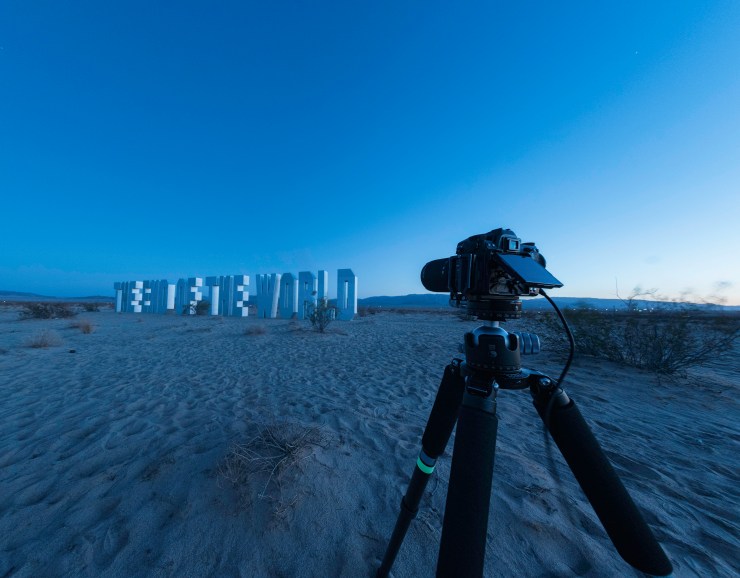How did I create these night photos with larger-than-life CGI-looking letters? I’ll tell you how I got this long exposure photo with light painting at the end of the world.
First of all, just what are those enormous words doing in the desert?
To photograph the end of the world, I had to go to the end of the world. Or at least Wonder Valley.
These enormous letters created by Jack Pierson are part of an art installation curated by High Desert Test Sites. This art is of course entitled “The End of the World.” I get asked if I saw cats pushing things off the edge of the earth. I’m sorry to say no. HDTS is a nonprofit organization that supports immersive experiences and exchanges.
Waiting on the moon

The moon slowly appeared behind the mountains to the left of the large letters. Low in the horizon, the moonlight kissed the letters and the sand underneath at a gorgeous angle.
I goosed it along a little by raking the light along the ground. Remember, this is still lighting. Good angles of lighting still apply here. It’s just simply darker.
Backlighting the letters
From there, I ran around to the back of the letters. Making sure not to shine the light directly into the camera, I carefully backlit everything. Since this required a lot of walking and long exposures with the light, it took me almost three minutes. I like how the glow on the side of the words comes from behind them. It makes the letters look even more surreal.
Letting it all “burn in”

After that, I just let the camera register two more exposures. Each exposure was three minutes. Consequently, since I let the camera go for two more exposures, it’s nine minutes total exposure since I “stacked” them in Photoshop.
The stars leaping over the letters
The reason I wanted some reasonably long star trails was to give the illusion of stars leaping over the letters. Knowing that I was more or less facing south, I knew that the stars would appear to be rotating around the South Celestial Pole. A little bit of knowledge of the movement of the stars can go a long way in helping your night compositions.
Tell your story with the second annual Visual Storytelling Conference!
Experience four days of interactive, online training sessions featuring a range of educational content with experienced photographers and content creators. This free event kicks off with a series of technical boot camps to build essential skills, followed by live, online sessions on photography, video, business and social media. Join live from March 10-13, 2022!
